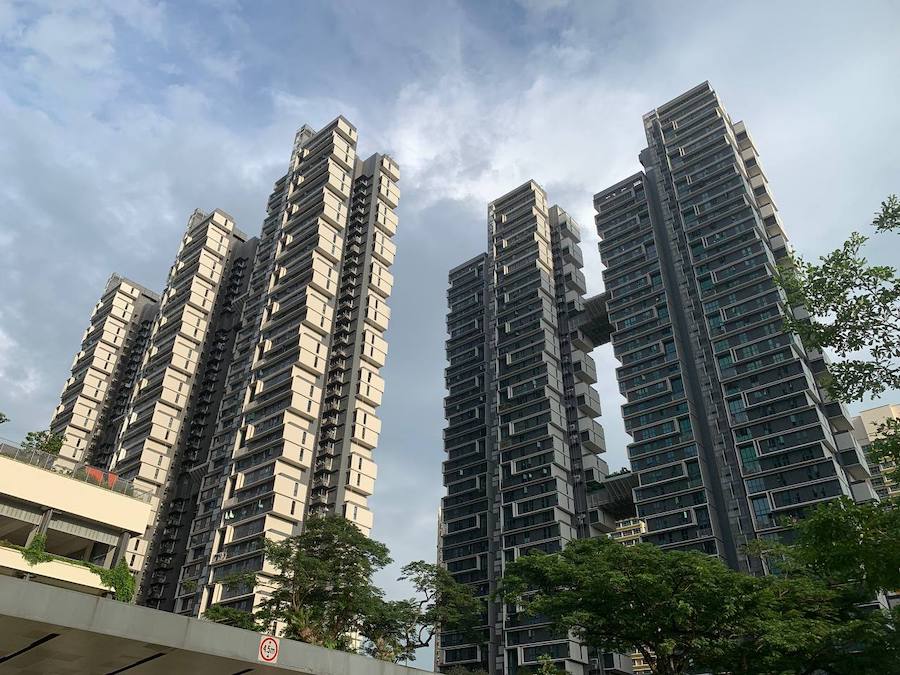Building equity: lessons for affordable housing in BC

No topic has dominated the headlines in recent years more than housing, or the growing lack of affordable options in Metro Vancouver and other cities in British Columbia. Scarce and expensive housing is eroding the province’s liveability and economy and large price rises have become a source of enormous wealth inequality.
Our new report analyzes policy changes introduced by the BC and federal governments in recent years—including speed bumps to slow more speculative forms of investment, regulatory changes to municipal zoning and rental markets and new public investments in affordable housing stock—and looks to next steps for a solutions agenda. It summarizes lessons from the Building Equity research project, a four-year CCPA-BC investigation into housing affordability in Metro Vancouver supported by the Vancouver Foundation, and extends them province-wide with a range of policy recommendations.
Supply and demand revisited
The soaring prices of homes in the ownership market point to housing supply that has not kept pace with demand. On the demand side, a prolonged period of low interest rates since 2008 increased the ability of households to borrow and contributed to soaring housing prices in BC. The emergence of higher interest rates since 2022, as central banks sought to combat inflation, has similarly cooled the housing market in terms of transactions and prices. Demographic factors, including Canadians and new immigrants moving to BC, are also central drivers of housing demand.
In recent years, speculative behaviour from real estate investors has been top of mind as home prices rise beyond the reach of many households, and several policies have sought to address this aspect of the crisis. This started with the Foreign Buyer Tax in August 2016, followed by additional tax reforms in 2018 and 2019. For the most part these measures have been aimed at foreign buyers and the high end of the housing market, rather than domestic investors. These changes have reduced foreign purchases to about 1.2% of transactions in BC in recent years.
On the supply side, BC faces a severe shortage of both non-market housing and overall housing supply. Canada Mortgage and Housing Corporation estimates that BC needs to build 610,000 more homes by 2030 above current building trends. Surging rents are an artifact of ultra-low vacancy rates for rental housing stock. In Metro Vancouver, vacancy rates around 1% have prevailed for more than a decade with the brief exception of the 2020 COVID-19 shock. In comparison, housing experts generally see a healthy vacancy rate as 3% to 4%, which would represent a more balanced housing market.
BC faces a severe shortage of non-market housing and overall housing supply.
In the context of a housing shortage, allowing new non-market and market rental apartments is crucial, particularly in the large land areas currently reserved exclusively for expensive, low-density housing. Where possible, land value increases from upzoning should be used to meet affordable housing objectives in both public and private developments, while ensuring projects remain economically viable so they actually get built.
The harsh reality is that it is expensive to build housing and the upfront costs of construction, acquiring land and various development charges/fees must inevitably be covered by sale prices for ownership housing and by rental income for rental housing.
Shifting from for-profit to non-profit projects can lower break-even rents in non-market developments by removing the developer/landlord profit margin. Nonetheless, we estimate the costs of construction dictate minimum monthly break-even rents of $2,035 for a one-bedroom unit, $2,853 for two-bedrooms and $3,671 for three-bedrooms in a non-market rental project with public land contributed, waived municipal development charges, lower-interest rates and a longer (50-year) amortization period.
Some lower rents could be achieved through cross-subsidization, i.e., if some of the units pay higher market rents and the difference is used to subsidize other units in the development at below break-even rents.
Public and non-profit models of housing development are much needed to deliver genuine affordability in the short run and to maintain affordability over time. Both the federal National Housing Strategy and the provincial Building BC program have been slow to deliver the type of community or social housing that was built from the 1960s to 1990s and that remains a cornerstone of housing affordability several decades later.
Directions for local governments
The BC government has implemented housing supply targets for local governments, while establishing minimum densities across the province. Municipalities were required to allow at least three- to six-unit multiplexes in lower-density areas and much-higher minimum housing densities close to SkyTrain stations or other specifically designated transit exchanges. However, rather than embrace these new requirements as minimum standards to be met and exceeded, many cities have sought to find loopholes or otherwise dilute the effect of these reforms.
We recommend local governments:
- Legalize multiplexes and small apartment buildings in detached-housing neighbourhoods: zoning should allow, as of right, the development of multiplexes to small apartment buildings with triple or more the current permitted Floor Space Ratio (FSR)—that is, at least 2.1 FSR.
- Reform public hearings: We recommend using deliberative mini-publics (also called citizens’ panels and citizens’ assemblies) as a more democratic and representative form of public engagement on land-use questions.
- Ensure market development contributes to dedicated affordable housing: In exchange for density that creates new market value, set out, in advance, requirements that a certain percentage of units be made affordable and that will constrain developers from bidding up land prices too much. These requirements must be set at levels that ensure projects remain economically viable so they actually get built.
- Implement renter protections: A robust system of renter protections should include strong rights and a fair process for renters adversely affected by redevelopment, whether on existing apartment sites or in detached-housing neighbourhoods (in particular, for secondary suite renters).
- Support public and non-profit housing developments: Local governments should implement simplified and faster permit approval processes for non-profits seeking to develop non-market projects at increased densities. Local governments could also act as public sector developers and/or contribute public land toward new non-market housing.
Directions for the BC government
The BC government has introduced a number of measures to boost market supply as well as a range of other supports for rental housing, including restrictions on short-term rentals, a new Renter’s Tax Credit and a Rental Protection Fund. However, a major gap still exists around the amount of planned public and non-market housing as existing programs are undersized relative to the housing affordability challenges facing low- to middle-income households. We recommend the BC government:
- Increase housing supply targets: Current housing supply targets established for 30 local governments are an important innovation, but are not particularly ambitious given the scale of the housing crisis and relative to past building.
- Expand reforms to end exclusionary zoning: More province-wide upzoning—perhaps at double or triple the allowable densities in any given area —for non-market housing would take zoning out of the equation as a constraint when competing with private market developers for land. Moreover, low-rise rental housing—non-market and market alike—should be allowed throughout low-density single-family areas, including the wealthiest enclaves.
- Commit to 250,000 non-market rental units: Progress on the 2018 Building BC program for non-market housing has been very slow relative to need, with only 16,777 units completed at the end of 2022, plus another 14,186 under construction. A bold BC-wide plan to build a new supply of dedicated, non-market affordable housing should aim for a quarter of a million homes over the next decade.
- Expand the Rental Protection Fund: The government’s $500-million Rental Protection Fund will help non-profits purchase and maintain more than 2,000 existing affordable homes. However, this is but a drop in the bucket of the existing rental homes needed across BC. New financial commitments should bolster the Fund as it is depleted.
- Create a new housing benefit: Amalgamate the Home Owner Grant and the Renter’s Tax Credit into a single income-tested housing grant for renters and owners alike. This would be in addition to existing provincial rental housing supports (Rental Assistance Program and Shelter Aid for Elderly Renters) as well as the shelter component of social assistance.
- Reform property taxation: Property tax reforms should tackle the extreme inequality of property wealth, raise revenue for public investments including affordable housing and make real estate a less-lucrative target for passive, non-productive investment. BC’s Property Transfer Tax could also be reformed to address speculative behaviour in the housing market.
- Update rent controls: In BC, a lack of security of tenure has been a significant challenge for renters in recent years, particularly those living in secondary suites and rented condos. To better protect renters, we recommend vacancy control to limit rent hikes between tenancies, which would tie rent controls to the unit and not to new renters as is the current practice.
Directions for the federal government
The federal government’s 2017 National Housing Strategy (NHS) has to date delivered relatively little of what Canadians might consider to be affordable or social housing. More of the strategy’s efforts have provided low-cost financing to private (both non-profit and for-profit) rental projects. Very little NHS funding has flowed to BC.
With access to nationwide taxation powers and borrowing capacity, the federal government needs to be a key player in building affordable housing and eliminating homelessness. This commitment will require higher levels of funding support. The federal government is also uniquely poised to reform the tax system, which is heavily tilted in favour of homeowners over renters. We recommend the federal government:
- Recommit the National Housing Strategy to build non-market housing and end homelessness: Through a mix of making direct investments, providing public land and ensuring low-cost financing, the federal government should make a generational investment to dramatically increase non-market housing supply, end the homelessness crisis and help reduce the upward pressure on rents in the for-profit rental market. This could include a significant expansion of the existing Canada Housing Benefit.
- Scale up the non-profit housing sector: Like BC, the federal government can support the non-market housing sector to acquire existing for-profit rental buildings. In addition to non-profit development on existing federal land, the federal government should acquire new public land for non-market housing. Non-profit housing developers could also be provided a lower interest rate than for-profit developers.
- Reform taxation of capital gains from housing: Ending the principal residence deduction, or at least putting limits on the amount of untaxed capital gains from the sale of these homes, should be on the table to rebalance the situation of renters vis-à-vis owners. The federal government should also end various first-time homebuyer incentives that serve only to inflate the housing market.
Conclusion
In a short time, the BC government has made significant reforms to the province’s housing market, with an emphasis on enabling supply-side solutions from the private sector. In addition to the deepening of zoning reforms to address the housing shortage, a key remaining gap is scaling up public efforts to develop new non-market housing and to support the non-profit housing sector. BC has a legacy of affordable housing from its shared investments (alongside the federal government) in non-market housing from the 1960s to 1990s. Renewing and bolstering non-market housing is central to the needs of low- to middle-income households.
Ultimately, tackling the housing crisis requires an all-of-the-above approach, including making large increases in non-market housing investment, accelerating zoning reform and increases to the supply of homes overall, taxing ballooning land wealth, providing cash transfers to low-income renters and strengthening tenants’ rights through stronger legal and regulatory protections.
This post is a part of an ongoing research project into affordable housing funded by the
Vancouver Foundation. | Download the full report (PDF, 44 pages) here.
Topics: Housing & homelessness, Municipalities, Provincial budget & finance

